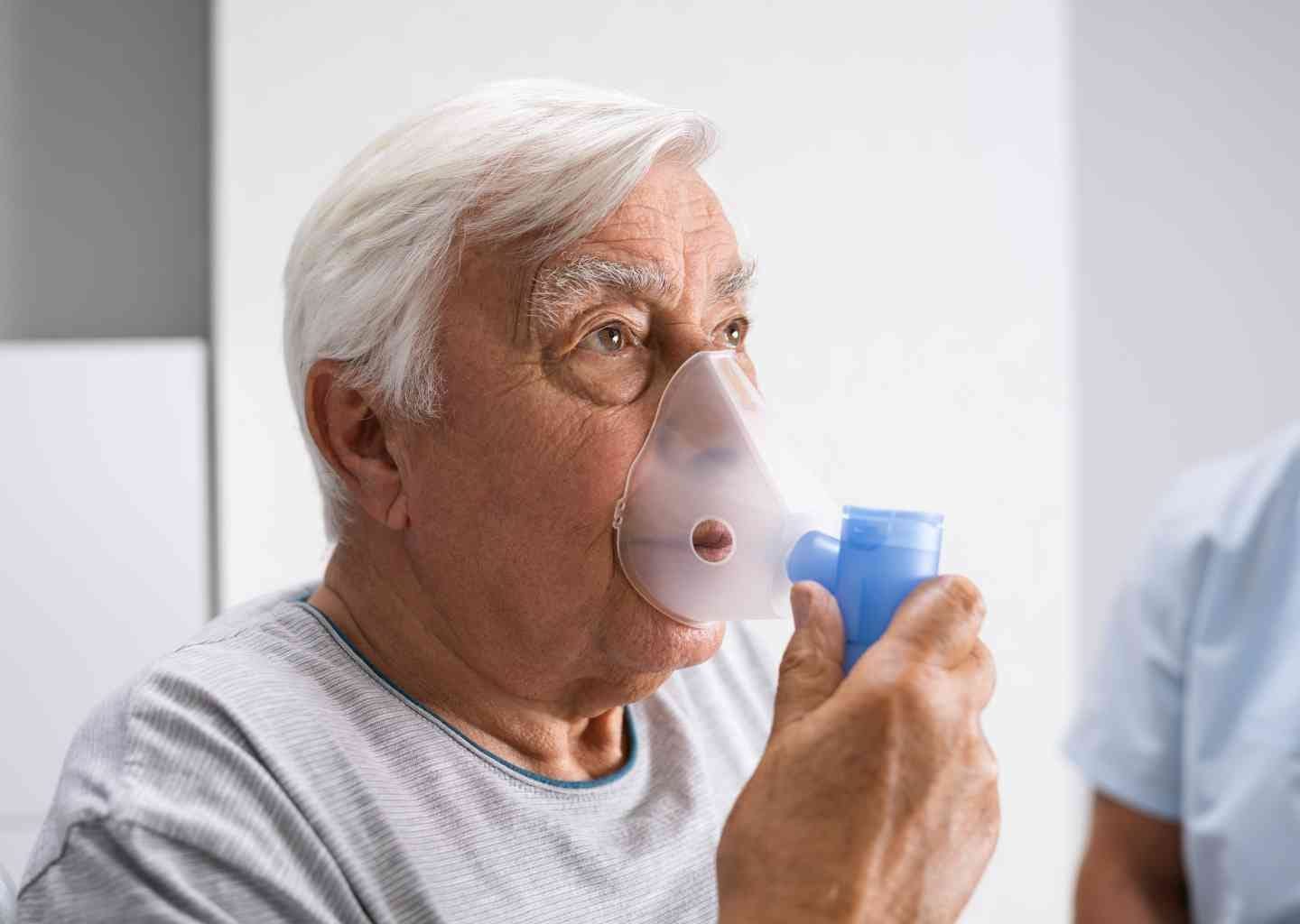This article discuses living with chronic obstructive pulmonary disease (COPD). COPD is a very serious progressive disease that causes breathing difficulty. It is usually caused by long-term exposure to chemicals that irritate the lungs.
COPD can have a dramatic effect on a person’s quality of life and make many common activities more difficult to perform. This article will help you understand more about this serious disease before explaining how home care can help you live with chronic obstructive pulmonary disease.
What is COPD?
To understand how COPD affects people, it is important to understand how the lungs operate. When a person breathes, air travels down their windpipe into the lungs. Once the air reaches the lungs, it enters tiny tubes called bronchial tubes.
The bronchial tubes branch off to even smaller tubes called bronchioles, which end in tiny air sacs called alveoli. When air reaches these sacs, it is transferred into the bloodstream via capillaries. Carbon dioxide is also removed from the capillaries and sent into the lungs to be exhaled. The airways and air sacs are elastic and change in size as a person breathes in or out.
COPD can impede a person’s ability to breath in four different ways:
- It causes parts of the airway or lungs to become less elastic
- The walls of the airway become larger, obstructing airflow
- The walls of the alveoli (air sacs) become damaged and they no longer function correctly. The walls can be damaged, cause the air sacs to merge and create larger, less effective sacs.
- The airways become clogged with mucus, making it much harder to breath
The two main conditions that cause COPD are emphysema and chronic bronchitis. Emphysema will destroy the walls of some air sacs and cause the sacs to lose their shape. Chronic bronchitis causes the airways to become inflamed and creates mucus, which blocks the airway.
Because COPD is a progressive illness, symptoms usually worsen over time and can become life-threatening. COPD is the third leading cause of death in the United States and a major cause of disability. The symptoms of COPD include:
- Shortness of breath, particularly after being active
- Tightness in your chest
- Wheezing when breathing
- Frequent coughing that produces mucus
Initially, people with COPD may only become short of breath occasionally. As the condition worsens, people often struggle to perform simple tasks like walking around the block or going shopping. When the condition becomes severe other symptoms can become noticeable including swelling in the ankles or feet, weight loss, and muscle weakness.
There is no cure for COPD, but there is a range of treatments which can help to slow the disease’s progression and improve a COPD-sufferer’s quality of life.
How Home Care Can Help Clients with COPD
Non-medical home care is a fantastic option for people who are suffering from a debilitating illness like COPD. A trained caregiver will visit the client’s home and provide a range of services including cooking, cleaning, assistance with person hygiene and much more. The most useful home care services for clients with COPD include:
Preparing delicious and nutritious meals
As COPD worsens, it can become difficult for a person to prepare healthy and nutritious meals due to the breathing problems they are experiencing. It can also become difficult to eat a large meal because of the stress it places on the respiratory system. This often results in people with COPD failing to get the calories and nutrients they require. This can lead to more severe symptoms and other illnesses.
Home care staff can help clients suffering from COPD by grocery shopping and preparing delicious meals. Caregivers can also prepare smaller meals throughout the day, which can be enjoyed without placing too much stress on the client’s respiratory system.
Helping the client perform rehabilitation techniques
People suffering from COPD should perform different forms of pulmonary rehabilitation to strengthen their respiratory system. This may include physical exercise, psychological counseling and disease management training. Home care staff can help the client perform various rehabilitative techniques in their home.
Transporting the client to appointments
COPD can make it difficult to walk long distances or use public transport. This is a particularly difficult problem for COPD sufferers because they need to attend doctor’s appointments on a regular basis. Home care staff can drive the client directly to the appointment and minimize the amount of walking that the client must perform. Staff can also help the client maintain an active social life by driving them to social engagements.
Cleaning the home
Domestic duties can become very difficult for someone with COPD. It is very easy to become short of breath when operating a vacuum cleaner or hanging laundry. COPD sufferers must also be very careful to avoid lung irritants like those found in commercial cleaning products.
Home care staff can perform domestic duties for the client and help them avoid coming into contact with chemicals which may inflame their condition. Some of the duties performed include vacuuming, mopping, cleaning bathrooms, cleaning windows, doing laundry and organizing the kitchen.
Providing companionship and emotional support
It is very difficult to live with COPD. Struggling to breath can cause great anxiety and stress. Home care staff can help by providing companionship to the client and giving them the certainty that help is quickly available if needed.
If you are interested in learning more about living with chronic obstructive pulmonary disease (COPD) and how All Heart Home Care can help clients with COPD, contact us today at 619-736-4677. We offer free in-home consultations and can explain all of the benefits obtained from using a home care service!







